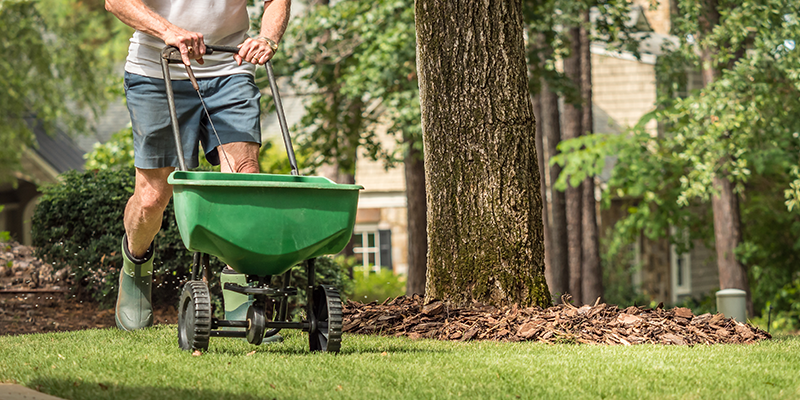Putting your lawn to bed before winter

Sponsored by Fertilizer Canada
Plants need the proper balance of nutrients to grow and stay healthy. In order to have a thick, healthy lawn that can fight off weeds and withstand drought conditions, proper feeding, watering, and timely cutting are necessary. Fertilizer ensures your lawn has all the nutrients, in the proper amounts, it needs to grow. To help protect your lawn before winter sets in, here are some helpful tips.
Using fertilizer is simple, but it’s important to do so with care. By following a few simple steps this fall season, not only will you have a lawn that looks and feels great in the spring, but you will be contributing to a greener world. Did you know that a healthy turf has a dramatic cooling effect, similar to air conditioning, compared to hard surfaces? It also acts as a water filtration system, reduces water run-off, and is a significant source of oxygen.
4R’s of Fertilizer Use
To fertilize properly and achieve the benefits of a thick, healthy lawn, homeowners and turf management professionals should follow the 4R’s of fertilizer use: the Right Source at the Right Rate, the Right Time and the Right Place.
Right source – This involves matching the fertilizer type to crop needs. Look for a fertilizer with higher nitrogen (N) and potassium (K), the first and last numbers on the bag. These are the nutrients that help promote a stronger root structure, disease resistance, and hardiness to not only withstand drought in hotter summer temperatures, but to survive the winter and bounce back in spring.
Right rate – This involves matching the amount of fertilizer to crop needs. If in doubt, just read the bag.
Right time – The right time involves making nutrients available when crops need them. Plant roots tend to go dormant in the driest parts of summer and in winter, when the ground is frozen. So, it’s important to focus on fertilizing in the spring and fall when plants need nutrients the most and avoid applying fertilizer if heavy rain is expected, or if the ground is frozen.
Right place – This involves keeping nutrients where crops can use them. Nutrients are mostly absorbed through the roots of the plant. So, for most crops, experience suggests that fertilizer is best placed in this area.
Storage and Sharing
After you are done fertilizing your lawn, store any leftover fertilizer sealed in its original container in a dry place for use next season or share by giving it to a neighbour or a relative, or donate it to a community group. This will help ensure their lawns also grow back lush and healthy in the spring.
Like all living things, lawns need food to stay healthy. You can find more helpful information about the right way to fertilize your lawn before winter at greenerworld.ca. MW
as published in Municipal World, November 2019
✯ Municipal World Insider and Executive Members: You might also be interested in Sarah Stadnyk’s article: Creating renewable energy opportunities for municipalities with organics diversion. Note that you can now access the complete collection of past articles (and more) from your membership dashboard.
Garth Whyte is President and CEO of Fertilizer Canada, joining the association in June 2015. Garth brings decades of industry association, advocacy, and government experience. He is currently a member of the Fertilizer Canada Board and is on the Canadian Agri-Food Policy Institute Advisory Committee.
Related resource materials:



